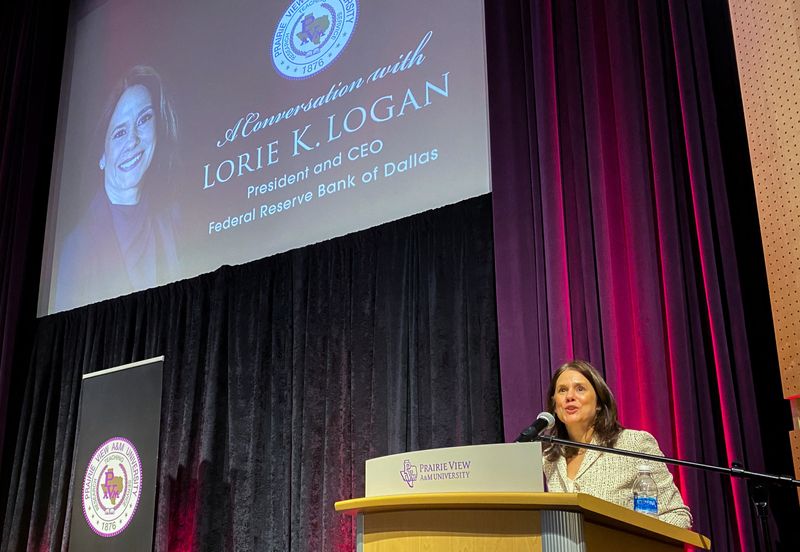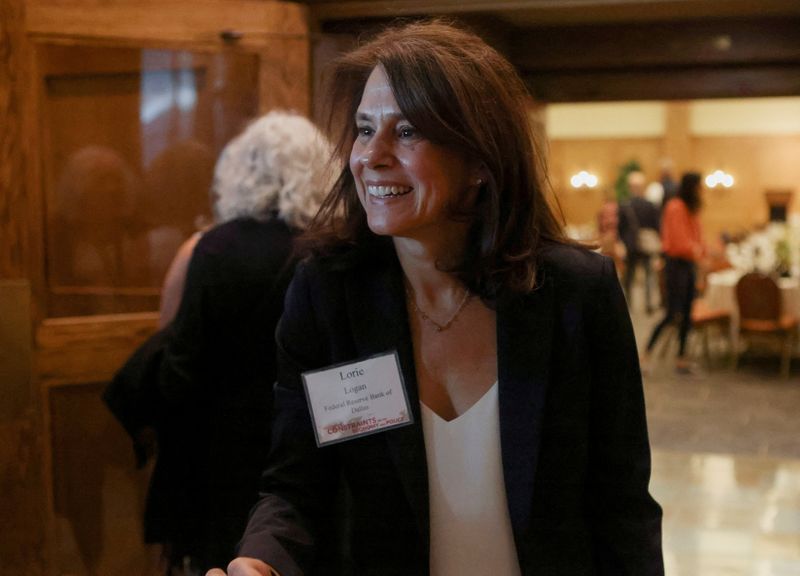(Reuters) - The U.S. central bank will need to keep gradually raising interest rates to beat inflation, Dallas Federal Reserve President Lorie Logan said on Tuesday, putting investors on notice that borrowing costs may ultimately need to go higher than is now widely expected.
"We must remain prepared to continue rate increases for a longer period than previously anticipated, if such a path is necessary to respond to changes in the economic outlook or to offset any undesired easing in conditions," Logan said in remarks prepared for delivery to students at Prairie View A&M University in Texas. "And even after we have enough evidence that we don't need to raise rates at some future meeting, we'll need to remain flexible and tighten further if changes in the economic outlook or financial conditions call for it."
The Fed last year lifted interest rates further and faster than any time since the 1980s to fight inflation that, by the central bank's preferred measure, has run for two years at about triple its 2% target. Fed policymakers have signaled they expect the benchmark overnight interest rate, now in the 4.50%-4.75% range, to need to go to at least 5.1% before policy will be "sufficiently restrictive" to ease price pressures.
Key to that, Logan said on Tuesday, will be substantial further slowing in wage growth and better "balance" in what is now an "incredibly strong" labor market. The unemployment rate fell in January to 3.4%, the lowest since 1969.
Logan, who is among the 19 policymakers who set interest rates at the Fed, said that though wage gains have moderated somewhat from their peak, she would need to see a lot more data to be convinced the labor market is no longer overheated.
Logan also said she will need to see "convincing" signs that inflation is dropping sustainably and in a timely manner toward the 2% target.
While there has been progress on inflation, with a moderation particularly in goods prices and more recently in housing, she said, more is needed, especially for prices of core services excluding housing. Without improvement there, she said, inflation could land at 3%, above the Fed's target.
"The most important risk I see is that if we tighten too little, the economy will remain overheated and we will fail to keep inflation in check," Logan said. "That could trigger a self-fulfilling spiral of unanchored inflation expectations that would be very costly to stop."

There are also risks, she said, of going too far and weakening the labor market more than necessary in pursuit of slowing inflation.
"My own view is that, given the risks, we shouldn't lock in on a peak interest rate or a precise path of rates," she said.
